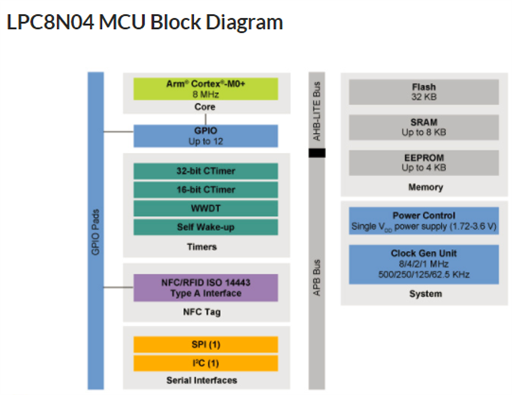Near Field Communication is growing in popularity. It's being used for more than payment processing; and it's even popping up in some of our design challengers' builds (e.g., The Cooker Connector by jschools). For the most part on the element14 community, projects that have included NFC have used an add-on expansion board or shield. But today I was sent some information on an MCU that integrates NFC.
It's produced by NXP, and called the LPC8N04 microcontroller.They consider it an entry-level connectivity solution for embedded applications with integrated NFC connectivity. It contains multiple features, including several power-down modes and a selectable CPU frequency of up to 8 MHz for ultra-low power consumption. The peripheral complement includes 32 kB of flash memory, 8 kB of SRAM, 4 kB of EEPROM, one I2C, one SPI/SSP, and up to 12 general purpose I/O pins. Your can read more about it by clicking here.
NXP also says that it enables developers to quickly implement broad-based solutions that leverage system diagnostics or environmental conditions for a smarter tagging experience. With the added benefit of flexible communication modes, you'd have the ability to push data to an LPC8N04 MCU-based edge-node, for example, in device provisioning, configuration or customization.
I think it has interesting possibilities for Board Games, Healthcare Wearables, Robotics, Industrial Uses and, of course, Secure Payments.
What do you think?
Would you be interested in roadtesting this product? What would you like to test or build?



